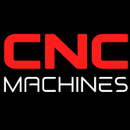How AI Will Evolve the American Manufacturing Process: Hardware, Software, and Automation

How AI Will Evolve the American Manufacturing Process: Hardware, Software, and Automation
Artificial Intelligence (AI) is set to become the defining force in the next era of American manufacturing. From smart hardware on the factory floor to intelligent software and fully integrated automation, AI is no longer a futuristic concept—it’s a strategic necessity. Over the next two decades, AI’s role will expand beyond optimization into full autonomy, reshaping how products are designed, built, inspected, and delivered.
1. AI-Enhanced Hardware: Smarter Machines at the Core
A. CNC Machines and Robotics with Embedded AI
Modern CNC machines are being equipped with AI-driven controllers that adapt cutting speeds, feed rates, and toolpaths in real time. As AI evolves, expect machines to become self-correcting and self-learning due to:
- Embedded sensors that monitor temperature, vibration, tool wear, and machine loads
- AI chips that process sensor data on the edge (without cloud latency)
- Adaptive behavior to correct chatter, avoid tool breakage, and reduce cycle times
B. Smart Vision and Inspection Systems
AI-powered computer vision systems will replace manual quality checks with in-line, real-time defect detection. Key advancements include:
- Surface defect classification via machine learning
- Dimensional inspection using 3D vision and AI
- Visual feedback loops that trigger automatic rework or part rejection
Impact: Higher first-pass yield, tighter tolerances, and consistent part quality with minimal operator intervention.
2. AI in Software: Smarter Planning, Programming, and Prediction
A. AI-Driven CAD/CAM Systems
AI is revolutionizing how parts are designed and programmed. CAD/CAM software now uses machine learning to:
- Auto-generate toolpaths based on part geometry and historical machining data
- Suggest optimal cutting parameters for materials, tooling, and machine models
- Simulate tool wear and heat effects for improved design-for-manufacturability (DfM)
As AI evolves, it will also bridge CAD and ERP systems for seamless quoting, material planning, and production scheduling.
B. Predictive Maintenance and Digital Twins
AI software will monitor factory equipment continuously and predict failures before they happen through:
- Utilizing digital twins—virtual replicas of machines—for testing, diagnostics, and optimization
- Integration with ERP systems to auto-schedule maintenance
- Predictive alerts based on usage patterns and anomaly detection
Impact: Downtime is reduced, maintenance becomes proactive, and capital equipment lasts longer.
C. AI-Powered MES and ERP Integration
Manufacturing Execution Systems (MES) and ERP platforms are being rebuilt around AI algorithms that:
- Optimize job scheduling and material usage in real time
- Adjust delivery timelines based on shop floor changes
- Automate production planning for fluctuating demand
AI will move ERP from reactive to prescriptive, providing decision-makers with actionable insights instantly.
3. AI and Automation: Toward the Fully Autonomous Factory
A. Collaborative Robotics (Cobots) with AI
Robots are becoming more intelligent, mobile, and context-aware. With AI, cobots will:
- Identify objects and adjust grips in real time
- Switch between tasks without reprogramming
- Learn from human workers to improve over time
AI allows robots to move beyond repetitive work and take on dynamic, judgment-based tasks—essential for high-mix, low-volume production.
B. AI-Driven Material Handling and Logistics
From warehouse to workbench, AI will direct material flow more efficiently:
- Autonomous mobile robots (AMRs) deliver parts and tools based on live work orders
- AI coordinates material storage, retrieval, and Kanban systems
- Integration with supply chain AI to predict shortages or delays
Impact: Reduced waiting time, fewer inventory errors, and a smoother workflow throughout the shop.
C. Lights-Out Manufacturing and Closed-Loop Automation
By 2040, expect the rise of fully autonomous production cells powered by AI:
- Machines will self-diagnose, self-correct, and reconfigure themselves for new jobs
- AI will manage power usage, safety, and throughput without human oversight
- Entire shifts could operate with no operators onsite, monitored remotely through AI-driven dashboards
Result: Unprecedented productivity, lower labor costs, and 24/7 operations with minimal intervention.
4. Benefits of AI Integration in U.S. Manufacturing
- Increased Throughput: AI-driven scheduling, machining, and logistics reduce waste and cycle times.
- Lower Operational Costs: Predictive maintenance and smart automation decrease downtime and manual labor needs.
- Higher Product Quality: Real-time monitoring and adaptive processes minimize defects and improve part consistency.
- Supply Chain Resilience: AI helps identify risks, optimize sourcing, and maintain production despite global disruptions.
- Better Workforce Utilization: AI augments workers, allowing them to focus on strategic tasks rather than repetitive operations.
5. Preparing for the AI Evolution in Manufacturing
- Invest in Training: Upskill workers in AI, robotics, data analysis, and smart systems.
- Audit Your Data: Ensure that machine and ERP data are accurate and accessible—AI is only as good as the data it receives.
- Start Small: Adopt AI tools for predictive maintenance or CAM optimization before scaling to full smart factory automation.
- Choose Compatible Equipment: Select machines and systems that support open integration with AI tools and software platforms.
Conclusion
The next 10-20 years will see AI completely transform American manufacturing—from smarter CNC machines and vision systems to autonomous robots and predictive ERP platforms. Companies that embrace AI across hardware, software, and automation will enjoy faster production, reduced costs, and a significant advantage in the global marketplace.
Whether you're running a small CNC shop or managing a multi-site operation, now is the time to integrate AI tools that drive efficiency, improve quality, and position your business for long-term success.


